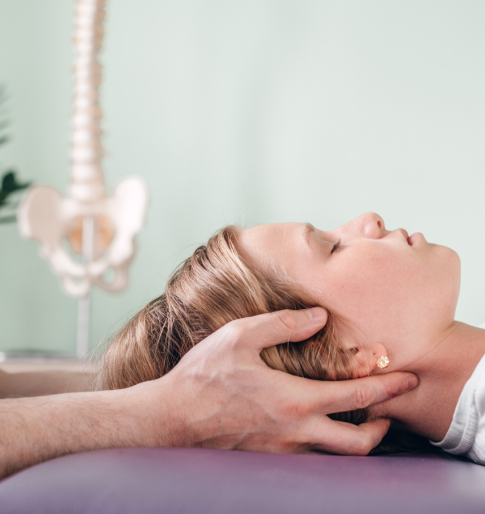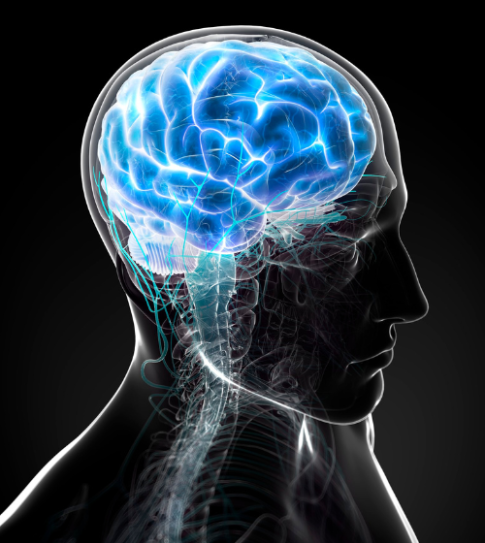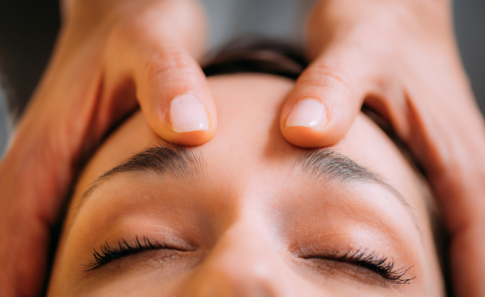What is CranioSacral Therapy?
CranioSacral Therapy (CST) is a very gentle whole body treatment system which is carried out on a clothed person, who will usually be lying on their back on a couch. Treatment can also be applied with the client in a seated position. This therapy employs the Craniosacral System (CSS) as a means of detecting and addressing subtle imbalances in the body which may be having a negative effect on health. The Craniosacral System is made up of a number of interconnected cavities inside the brain, called ventricles, within which a special fluid is produced. This fluid called cerebrospinal fluid (CSF) circulates through the ventricles, into the spinal cord and then back into the brain. The flow of the CSF directly causes miniscule movements of the bones of the head, and also the sacrum (the tail bone) as a consequence of it also being attached to the covering of the spinal cord.


The coverings of the brain and spinal cord are called the meninges and are a type of connective tissue otherwise called fascia. The movement of the CSF also has the effect of gently “massaging” the brain resulting in cyclic stimulation and relaxation of muscle tone throughout the body. These various subtle pulse-like movements make up what is called the CranioSacral rhythm (CSR), and while they are slight, they are nevertheless discernible to a CranioSacral Therapist. The key components of the CSS therefore, are the brain, the bones of the skull and sacrum, all of the connective tissue throughout the whole body, and especially the CSR.
How Does CranioSacral Therapy work
According to the principles of CST the therapist will evaluate the CSS and assess for any imbalance or dysfunction, which may affect parts of the body or the whole body-mind system. The therapy then seeks as far as possible to remove or reduce any imbalances and coordinate CSS functioning, thereby eradicating or at least decreasing any condition which may be detrimental to the health of the client.
The therapy itself is extremely gentle, partly because the CSS is a very sensitive system which can be easily overwhelmed by too much force, but will respond favourably to light input. Also, while fascia is very durable and able to resist strong forces, it will however also respond favourably to a gentle input.
The pressure of touch employed by a CranioSacral Therapist is usually no greater than the weight of a coin. This is generally enough to stimulate subtle reactions which the therapist can follow and, as necessary, direct in order to bring about necessary change. The combination of the extreme gentleness of the treatment and the inherent non-invasive nature of the individual techniques allows the client’s body to “determine” its own pace of change. These principles make CST an extremely safe treatment modality, from which almost anyone could potentially benefit.


Due to the lightness of touch involved, it is not unusual for the client to not be aware of much happening at first. However, this will usually change with time. People are often unused to feeling what is going on within their own bodies, in this modern technological age where most of us experience pretty much relentless external stimulation, which continually takes our awareness out and away from ourselves. One of the supplementary benefits of receiving CST is that it can help to make us more aware of what is going on inside our bodies. This can enable us to recognise early signs of distress, disturbance and/or dysfunction, before they develop to the point where they significantly disrupt our quality of life.
What Can CranioSacral Therapy Treat?
Experience has shown that CST can be beneficial for a wide range of problems associated with discomfort, pain, dysfunction and even emotional disorders. In CST we do not try and figure out medically what is wrong and fix it. Therefore, we do not claim to treat specific conditions. Nevertheless, as mentioned above, the purpose of CST is to optimise health through the discovery and removal of impairments to CSS functioning. This can also lead to other benefits such as better quality sleep, feeling more relaxed or even just a sense of well-being. In fact, as this approach appears to complement and stimulate the natural healing and recuperation processes of the body, it is increasingly being used by “well” people in order to help maintain good health.
© Keith Davies
powered by WebHealer